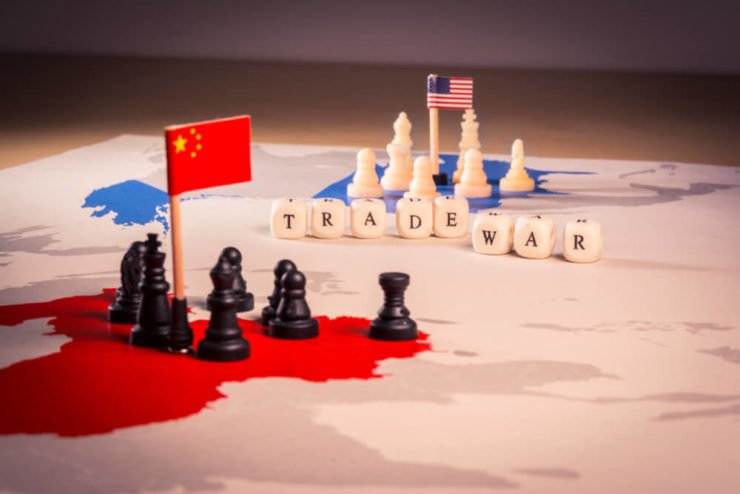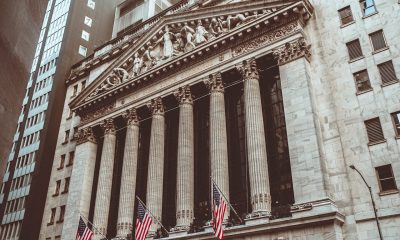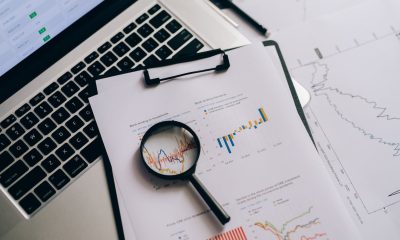Featured
Why Jerome Powell’s rate pause won’t save stocks
Jerome Powell did Wall Street a favor by pausing the Fed’s rate hike campaign, but how will this move affect the stock market in general?

Jerome Powell threw Wall Street a lifeline recently when he decided to temporarily take a pause with the Fed’s rate hiking campaign. The Fed Head also indicated that the process of credit destruction, known as Quantitative Tightening, may soon be brought to an end. This move towards donning a dovish plume caused the total value of equities to soar back to a level that is now 137 percent of the GDP. For some context, that valuation is over 30 percentage points higher than it was at the start of the Great Recession and over 90 percentage points greater than 1985. So, the salient question for investors is: will a slightly dovish FOMC be enough to support the massively overvalued market?
The S&P 500 is now trading at over 16x forward earnings. But the growth rate of that earnings will plunge from over 20 percent last year to a minus 0.8 percent in Q1 of this year, according to FACTSET. It might have made sense to pay 19x earnings back in 2018 because it was justified by a commensurate rate of earnings growth. But only a fool would pay 16x or 17x earnings if growth is actually negative?
The only reason why that would make sense is if investors were convinced EPS growth was about to soar back towards the unusually-strong rate of growth enjoyed last year. And for that to be the case, several stars have to align perfectly.
The structural problems that are leading to sharp slowdowns in Europe, China and Japan all have to be resolved favorably and in a very short period of time. And, of course, global central banks begin another round of massive and coordinated of QE.
In addition, the trade war must also be resolved quickly and in a way that does not inflict any further damage to the ailing economy in China. Not only does China have to agree on a myriad of concessions; including eliminating its trade surplus with the U.S. and renouncing its practice of intellectual property theft. But the communist nation must also agree to subject itself to rigorous monitoring and enforcement mechanisms. Not only this, but any eventual deal must be constructed in a way that ensures increasing China’s dependence on imports does not negatively affect domestic production.
Additionally, China’s government must be able to re-stimulate its growth by forcing yet more debt upon its economy, which is already so overleveraged that it has begun to crash.
In addition, the chaos that surrounds Washington must abate quickly. This means future government shutdowns must be averted and that there will not be Presidential indictments from the soon to be released Mueller probe. Also, the upcoming conflagrations and brinksmanship over funding the government and increasing the debt ceiling must not adversely affect consumer sentiment.
But by far the most important of all these factors is the Fed. It must turn out to be the case that the previous 9 rate hikes and $500 billion worth of currency destruction through QT haven’t already been enough to push the economy and stock market over the edge–especially in view of the fact that the balance sheet reduction process is still ongoing.
It is prudent to point out that the Fed last stopped raising rates in the summer of 2006. But that certainly didn’t turn out to be the all-clear sign for the economy. A mere twelve months later the stock market began to crash, and 18 months after the Fed’s last hike the real estate crisis and Great Recession began.
Back in 2006, the global economy was booming with a growth of over four percent. In sharp contrast, today we have parts of Europe in a recession, while Japan’s GDP is contracting. There is now a sharp slowdown in China from well over 10% growth in 2006, to the six percent range today. Also, the U.S. economy has slowed from 4.2 percent in Q2 of last year to around one percent at the start of this year. The point here is the world isn’t growing like it was 13 years ago, or even where it was a year ago — it is now teetering on recession.

This means there is a huge difference between the point in which the Fed is going dovish this time around — if you can indeed categorize a dovish Fed as one that is still in the process of destroying 10’s of billions of dollars each month through its reverse QE program.
It is true that the Fed stopped hiking the Funds Rate at 5.25 percent back in 2006; while today it is just below 2.5 percent. Therefore, Wall Street shills take solace in the fact that rates are at a lower point now than they were in the last hiking cycle. So, they conclude with an alacrity that today’s level of interest rates will turn out to be innocuous.
However, as already mentioned, stock prices are much higher relative to GDP today than in 2006. And, debt levels today dwarf what was evident at the start of The Great Recession. The fact is that total non-financial debt in the U.S. has surged from $33.3T (231 percent of GDP) at the start of the Great Recession in December of 2007, to $51.3T (249 percent of GDP) as of Q3 2018. The bottom line is the economy is lugging around an extra $18 trillion of debt that it has to
Therefore, it is logical to conclude after raising the Fed Funds Rate nine times since December 2015 and also for the first time in history destroying $500 billion from its Quantitative Tightening program, that the Fed has already tightened enough to send earnings and GDP into a recession.
Despite the sharp slowdown in the global economy, the perma-bulls dismiss the idea of an earnings recession that lasts more than one quarter. This is primarily because the Fed has gone on hold with its monetary policy. However, this ignores the earnings recession that occurred only a few years back.
The S&P 500 EPS for the calendar year 2014 was $119.06, for 2015 it was $118.76, and for 2016 it was $119.31. It should be noted that the earnings recession of 2014-2016 occurred in a much more favorable macroeconomic environment. The ECB was still in the throes of its QE program, the Fed Funds Rate was 200 basis points lower, the trade war had not yet begun, the Fed’s reverse QE program was still another year off, and the Fed’s balance sheet was a half-trillion dollars larger. Yet, the earnings recession still happened; and the stock market went absolutely nowhere for two full years with a couple of steep double-digit percentage point drops mixed in.
The earnings recession was only bailed out by Trump’s massive corporate tax cut, an unprecedented stimulus package from China, and global QE that was spitting out around $100 billion of monetary confetti each month. But those conditions are not likely to be repeated, and that means that the global economy must stand on its own debt-disabled legs for the first time in over a decade.
Sadly, it should end up taking much more than an abeyance with rate hikes to levitate stock prices. After this next plunge in asset prices, the Fed will be quickly cutting interest rates back to zero percent and all global central banks will be forced to re-engage with a massive, protracted and record-breaking round of QE. This will also be combined with a humongous global fiscal stimulus package that will serve to push bankrupt nations further into insolvency.
It may be possible to rescue the stock market in nominal terms using this type of fiscal and monetary madness. However, it also means the already endangered middle class will take a giant step towards extinction. And this is why the timing of precious metals ownership will be more crucial than ever.
—
DISCLAIMER: This article expresses my own ideas and opinions. Any information I have shared are from sources that I believe to be reliable and accurate. I did not receive any financial compensation for writing this post, nor do I own any shares in any company I’ve mentioned. I encourage any reader to do their own diligent research first before making any investment decisions.

-

 Crypto5 days ago
Crypto5 days agoBitcoin Traders on DEXs Brace for Downturn Despite Price Rally
-

 Business2 weeks ago
Business2 weeks agoDebt-Fueled Markets, Zombie Corporations, and the Coming Reckoning
-

 Crowdfunding2 days ago
Crowdfunding2 days agoFrom Confiscation to Cooperation: Funding Casa de la PAZ’s Social Transformation
-

 Impact Investing1 week ago
Impact Investing1 week agoGlobal Energy Shift: Record $2.2 Trillion Invested in Green Transition in 2024
























